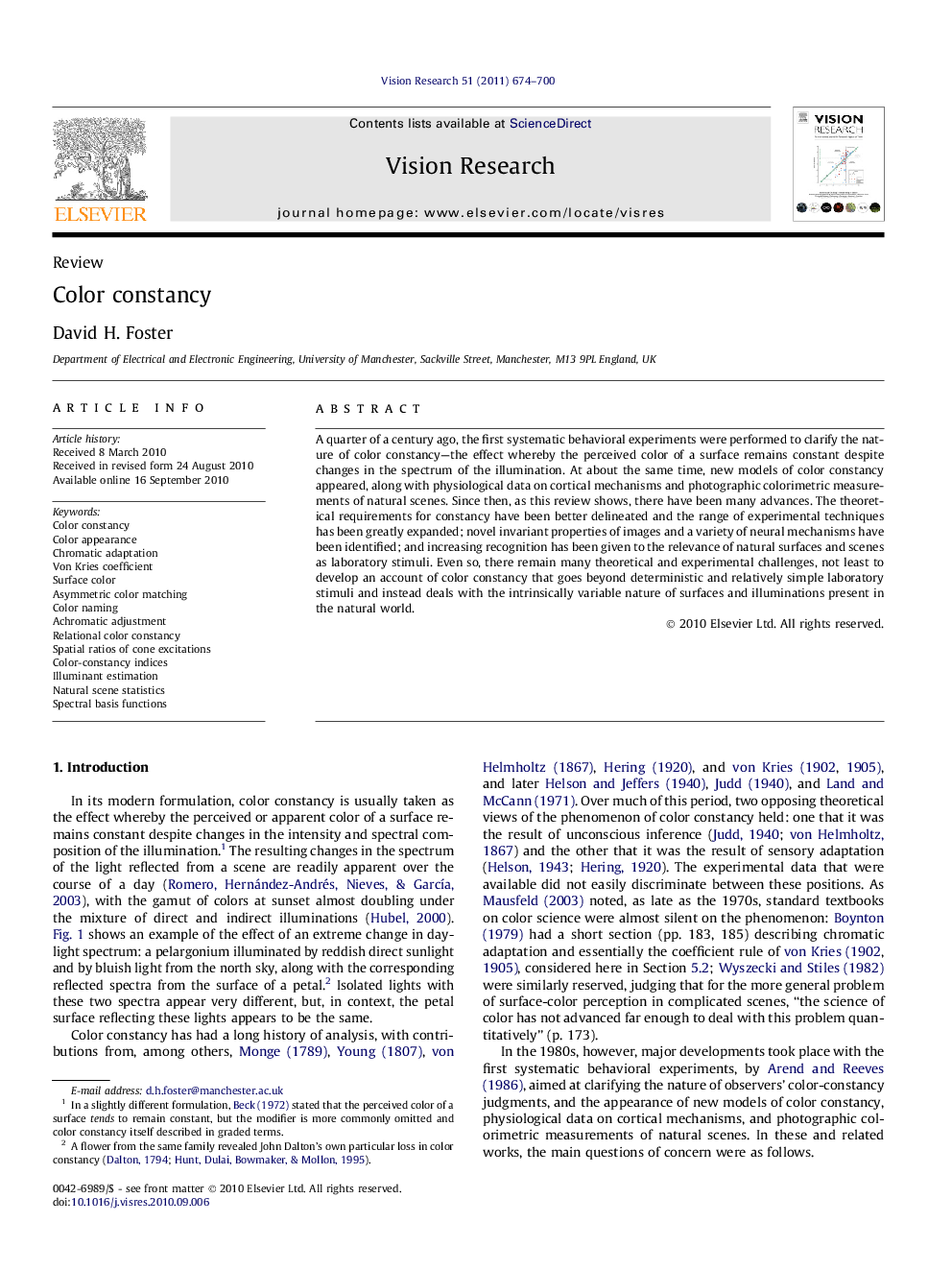| Article ID | Journal | Published Year | Pages | File Type |
|---|---|---|---|---|
| 4034174 | Vision Research | 2011 | 27 Pages |
A quarter of a century ago, the first systematic behavioral experiments were performed to clarify the nature of color constancy—the effect whereby the perceived color of a surface remains constant despite changes in the spectrum of the illumination. At about the same time, new models of color constancy appeared, along with physiological data on cortical mechanisms and photographic colorimetric measurements of natural scenes. Since then, as this review shows, there have been many advances. The theoretical requirements for constancy have been better delineated and the range of experimental techniques has been greatly expanded; novel invariant properties of images and a variety of neural mechanisms have been identified; and increasing recognition has been given to the relevance of natural surfaces and scenes as laboratory stimuli. Even so, there remain many theoretical and experimental challenges, not least to develop an account of color constancy that goes beyond deterministic and relatively simple laboratory stimuli and instead deals with the intrinsically variable nature of surfaces and illuminations present in the natural world.
Research highlights► Critical analysis of theoretical and experimental approaches to human color constancy. ► Five challenges for color-constancy research. ► Table of constancy experiments and performance indices.
